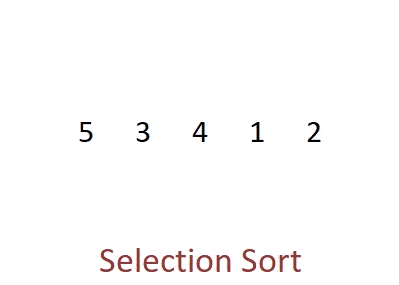Selection sort is simple and easy to implement. But it is also very inefficient in terms of time complexity.
Time Complexity
- Best: Ω(n^2)
- Average: Ω(n^2)
- Worst: Ω(n^2)
In selection sort, we loop through the array by selecting the smallest value and then swapping it to the left side of the array till it is sorted in ascending order.
Code
const selectionSort = (arr: number[]): number[] => {
const len: number = arr.length;
let minInd: number = -1;
for (let i = 0; i < (len - 1); i++) {
minInd = i
for (let j = (i + 1); j < len; j++) {
if (arr[j] < arr[minInd]) {
minInd = j
}
}
if (minInd !== i) {
[arr[i], arr[minInd]] = [arr[minInd], arr[i]];
}
}
return arr;
}
const result = selectionSort([64, 25, 12, 22, 11]);
Output
Output: [11, 12, 22, 25, 64]
Here how the code is working
- The function takes the unsorted array [64, 25, 12, 22, 11].
- Iteration 1: [11, 25, 12, 22, 64] → i = 0, minInd = 4 and min value is 11.
- Iteration 2: [11, 12, 25, 22, 64] → i = 1, minInd = 2 and min value is 12.
- Iteration 3: [11, 12, 22, 25, 64] → i = 2, minInd = 3 and min value is 22.
- Iteration 4: [11, 12, 22, 25, 64] → i = 3, minInd = 3 and min value is 25.
- For iteration 4 it won't swap the value as the minInd and i are the same so there are no unnecessary swap.
That’s all for the selection sort, thanks for reading!








Top comments (1)
Maybe you could use relevant variables names with more than one character, this way complete beginners (we all have been there) can learn from your post some valuable knowledges and you target a larger audience.
Here is a proposal for you and others to better grasp the algorithm behind the selection sort.